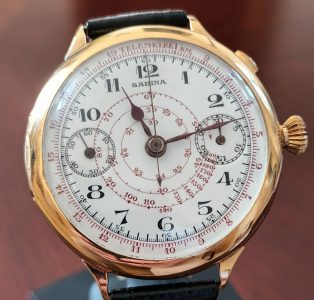The Avia I obtained a few months ago was the oldest chronograph I possessed – being early 60’s. Although still desirable, I still hankered after something even more “vintage”. It was therefore after I stumbled across a watch emporium entitled Olde Timers (from Hernhill in Kent), that this yearning came closer to being satisfied!
The business is run by a one Crispin Maciejewski, a qualified watchmaker who specialises in watches up to, say, the 1950s or so. There are a fair number of offerings available, and very impressive they are too. All are nicely pictured with sufficient descriptions. Anyway, I finished scrutinising the main brands list but then noticed an “other brands” section. This contained some half a dozen or so other pieces, including a gold Sabina mono pusher chronograph from the 30’s. I was quite taken by the dial – and the fact that it was not of a miniscule size. Also – as is my want these days, it was cased in a precious metal. Price? Well, let us just say that it was a fair few thousand pounds as of course such pieces are pretty rare.
As usual, I then did a bit of research – or at least tried to! However, I soon to discovered that there is very little information on Sabina and their watches. In fact, I would say that it yielded the most minimalist information I have ever encountered when researching a watch brand! All I could glean really was that a watch company was started by a Paul-Virgile Mathez in 1904, and by 1919 this was trading as Sabina from Tramelan in Switzerland. More latterly, a Fredy Mathez was named in the winding-up of the company in 2012. Incidentally, the name Sabina refers to a female from the Sabine tribe (who lived in the Apennines before the Roman Empire) and may mean wisdom! Anyway, all this is rather peculiar because if you Google Sabina watches, a fair few models pop up – including older chronographs (single and double pushers) and triple calendars, with production seemingly going from the 1920s through to the 1970s in fact. On one internet document found, I did note that a last patent from Paul-Virgile was in 1979. However, unless I am seriously missing something, Sabina is almost like a ghost!!
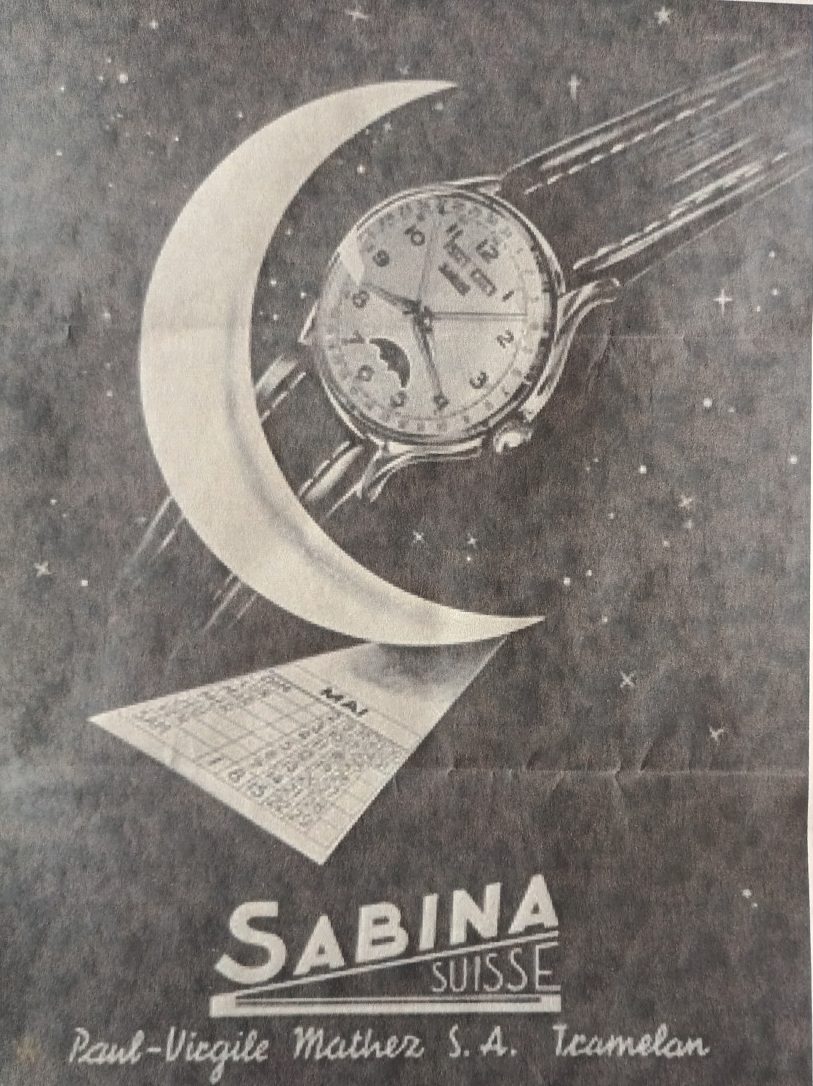
Anyway, returning to the chronograph, I posed a few questions and then spoke to Crispin a couple of times. It turns out that he has a penchant for older chronographs and this watch came from his own personal collection. He told me that he purchased it from an acquaintance in Italy some 15 years ago. So, there was at least some provenance – albeit for a minimal period of the watch’s life! After some final discussion I agreed to purchase.
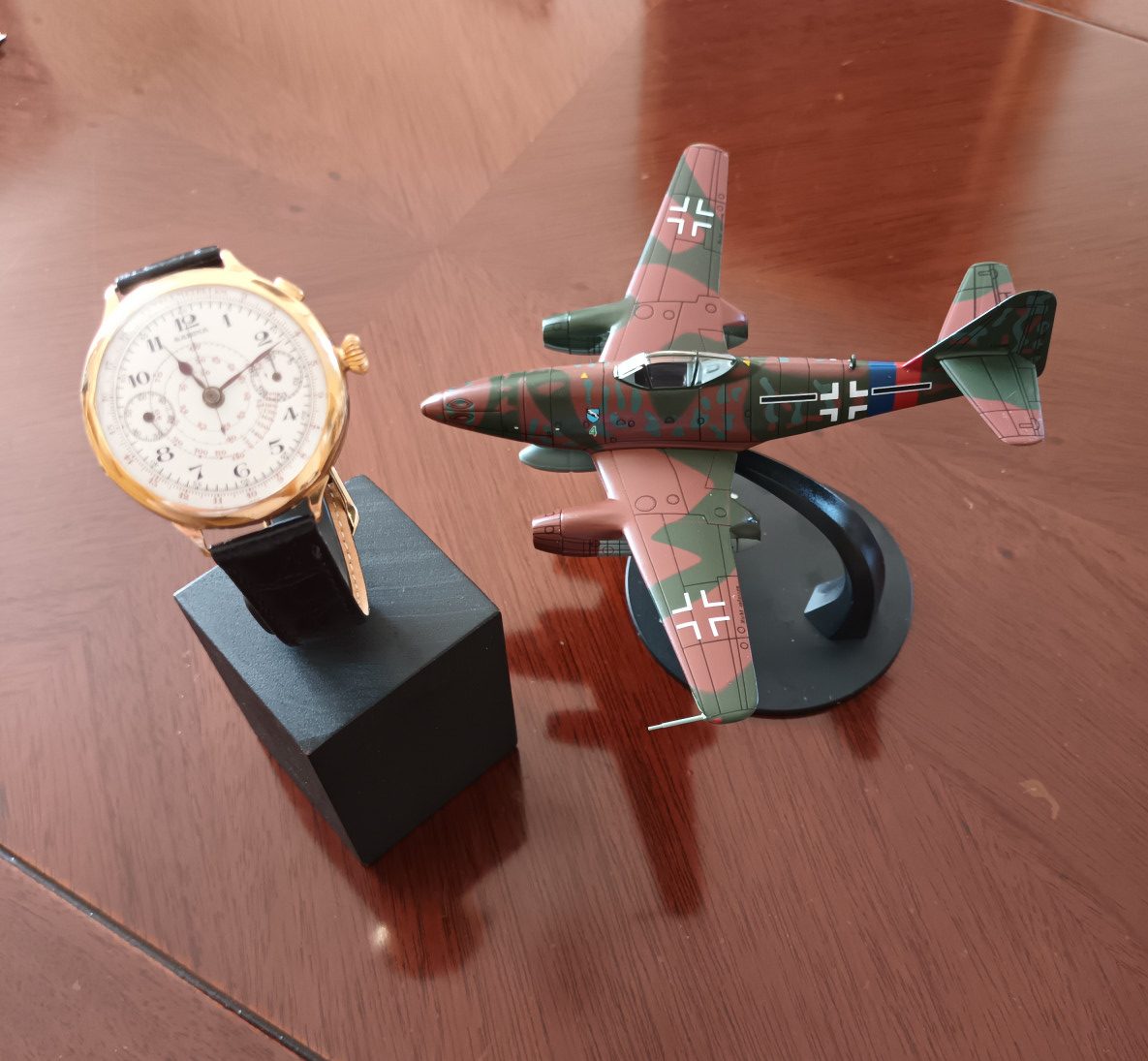
So what exactly have I bought? Well, obviously an old Sabina single button chronograph in gold, and probably intended for the officer class in the military. In terms of date, it is between 1926 to 1934 (possibly around 1928 in fact. Ed). The case is marked with a reference number plus the appropriate Swiss gold stamps – Helvetia Head, 18k and 0.750 – along with the Poinçon de Maitre (hammer insignia), which contains the number 132 and denotes the case maker. I have discovered that this was Monnier & Co of La Chaux-de-Fonds. It is also likely that the watch was originally sold into Italy. At this point I thank David Boettcher FBHI for his valuable assistance in drawing some of these threads together. As such I would refer you to his interesting website at: www.vintagewatchstraps.com – a valuable resource for the vintage watch collector.
The case – in 18k gold, measures some 39mm x 10mm and has small delicate lugs. The front of the case is hinged to access the dial, as is the solid rear. A gold diamond shaped crown has been fitted – undoubtedly not original, but certainly in keeping and in fact more practical than usual! Above this at 2 o’clock, is the very delicate lozenge-shaped mono-pusher button which operates all the stopwatch functions, being, of course; start/stop/reset. The watch sports a black crocodile effect leather strap with a gold plated (or effect) buckle. Most old watches have separate fixed bars, but in this case there are none as such. At the lug end, it simply turns 90° and continues with a 1mm gold “thread” to join the other lug. (This can be seen in the image below, particularly at the bottom left lug. Ed)
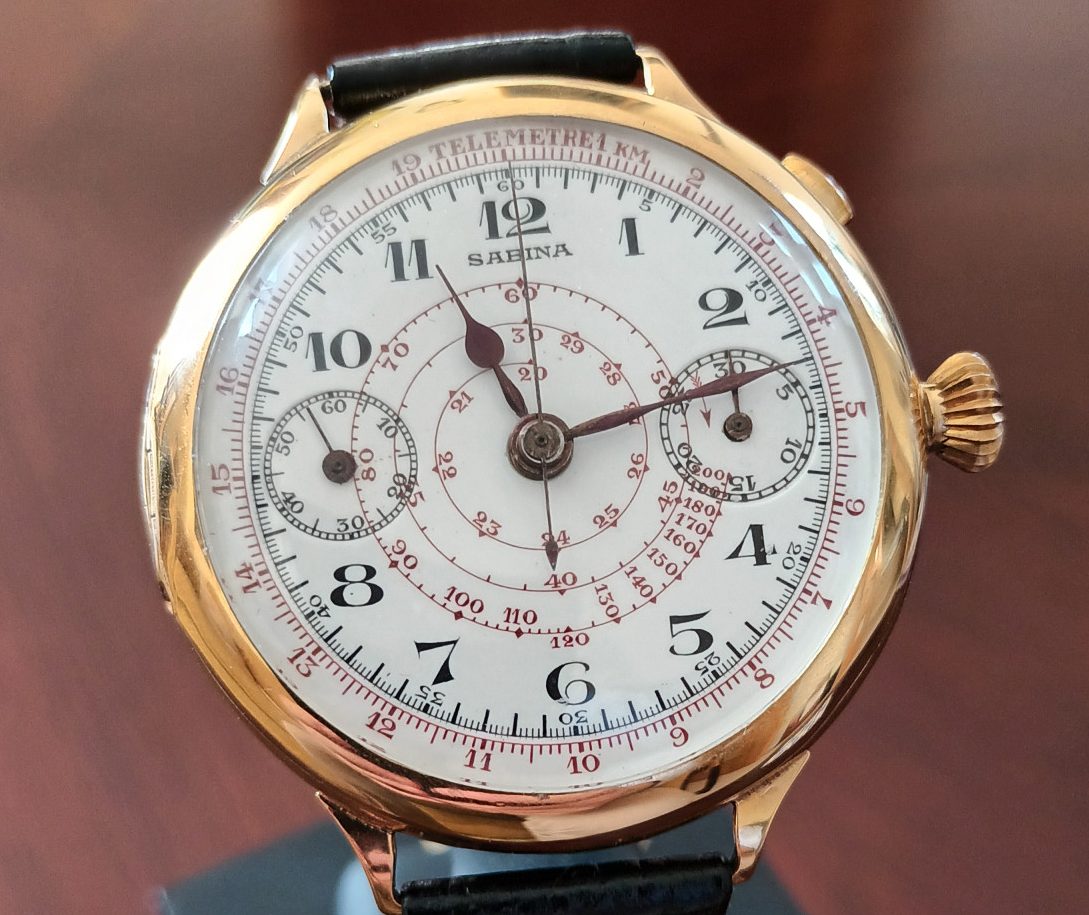
The case is attractive enough, but it’s the dial that really draws the eye. It is of white enamel with black Arabic numerals (in the Breguet style), and with the Sabina name at 12. The numbers 3 and 9 are omitted as two sunken counter registers are situated in their place. The former notes minutes and the latter running seconds. At the dial periphery there is a red telemeter scale which numbers 1-20 and is in kms. In-board to this is a black rail track, graduated from 1-60. In-board again, and in red, is a snailed tachymeter. Finally, Breguet style hands. The minute hand is a double feuille design, with the hour of the pear type. The seconds hand is a fine needle with a tiny arrow counterbalance. These – along with the sub-dial hands, are blued.
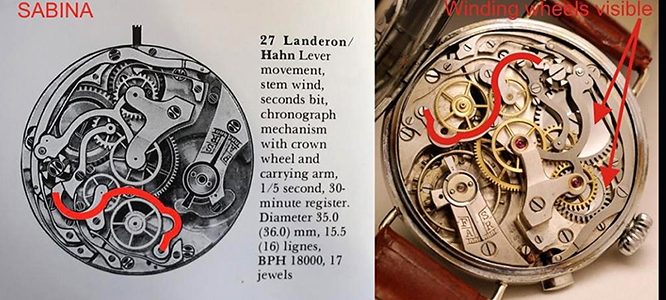
Turning to the movement, this is a hand-wound Landeron Hahn 27 lever and pillar type at around 15.5 lignes in size (so about 35mm). There are 17 jewels and the vph is 18,000. Power is probably not much over 24 hrs and common for the age. As one would expect, as the case is closed there is next to no visible decoration on the movement. The inside of the case though does have perlage, the gold marks, and a very faint service “scratch” for 1965!
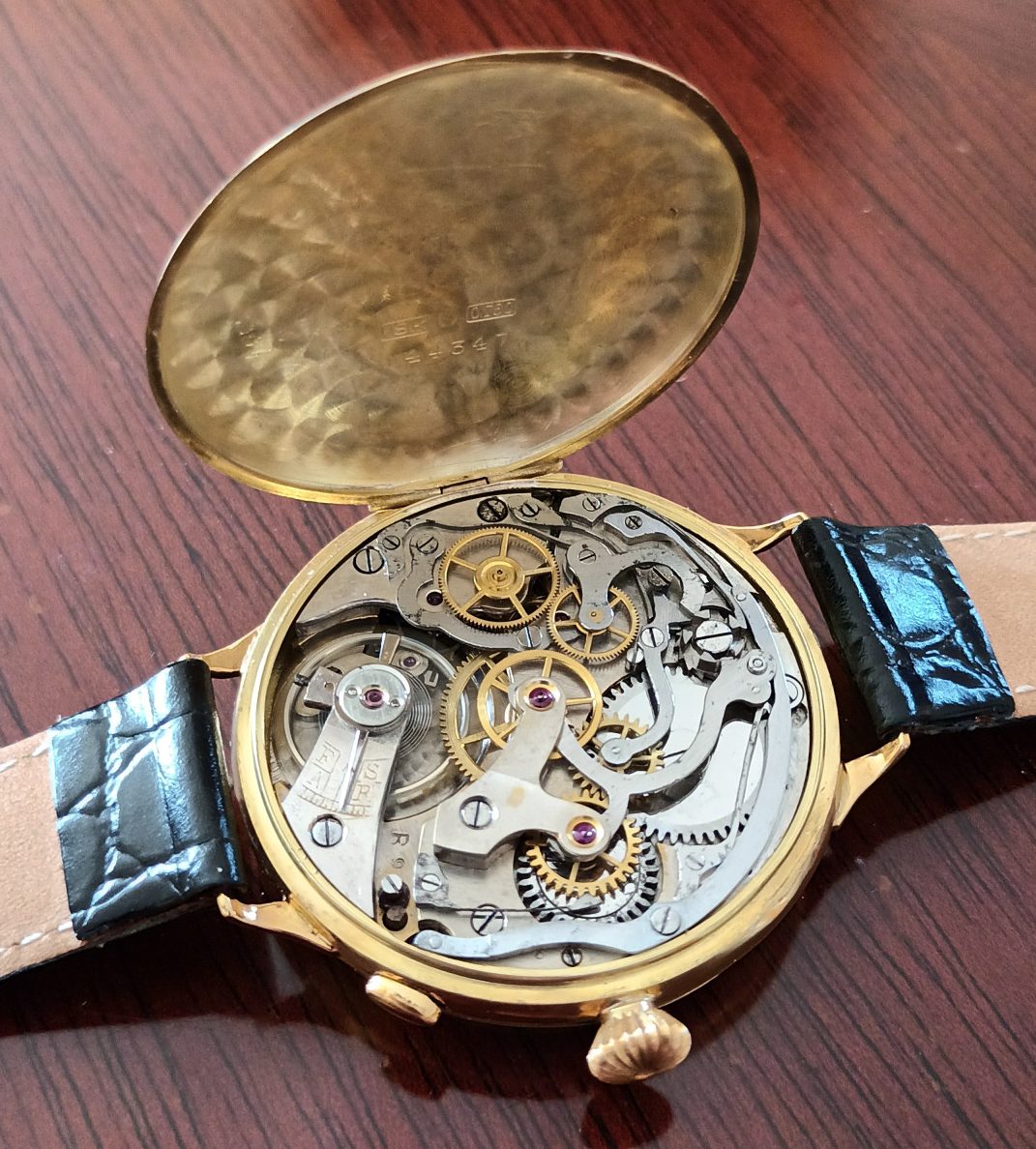
Being a personally owned piece by a respected watch maker/seller, unsurprisingly, it is in very good condition – bearing in mind that it is fast approaching 90 years old! Crispin did some final checks in terms of regulation and I am pleased to say that the time keeping is very good. Being an old watch, one does have to remember to wind more often than more modern pieces, so in this case every day really. The more modern size is also very handy and makes it more usable than many of its age.
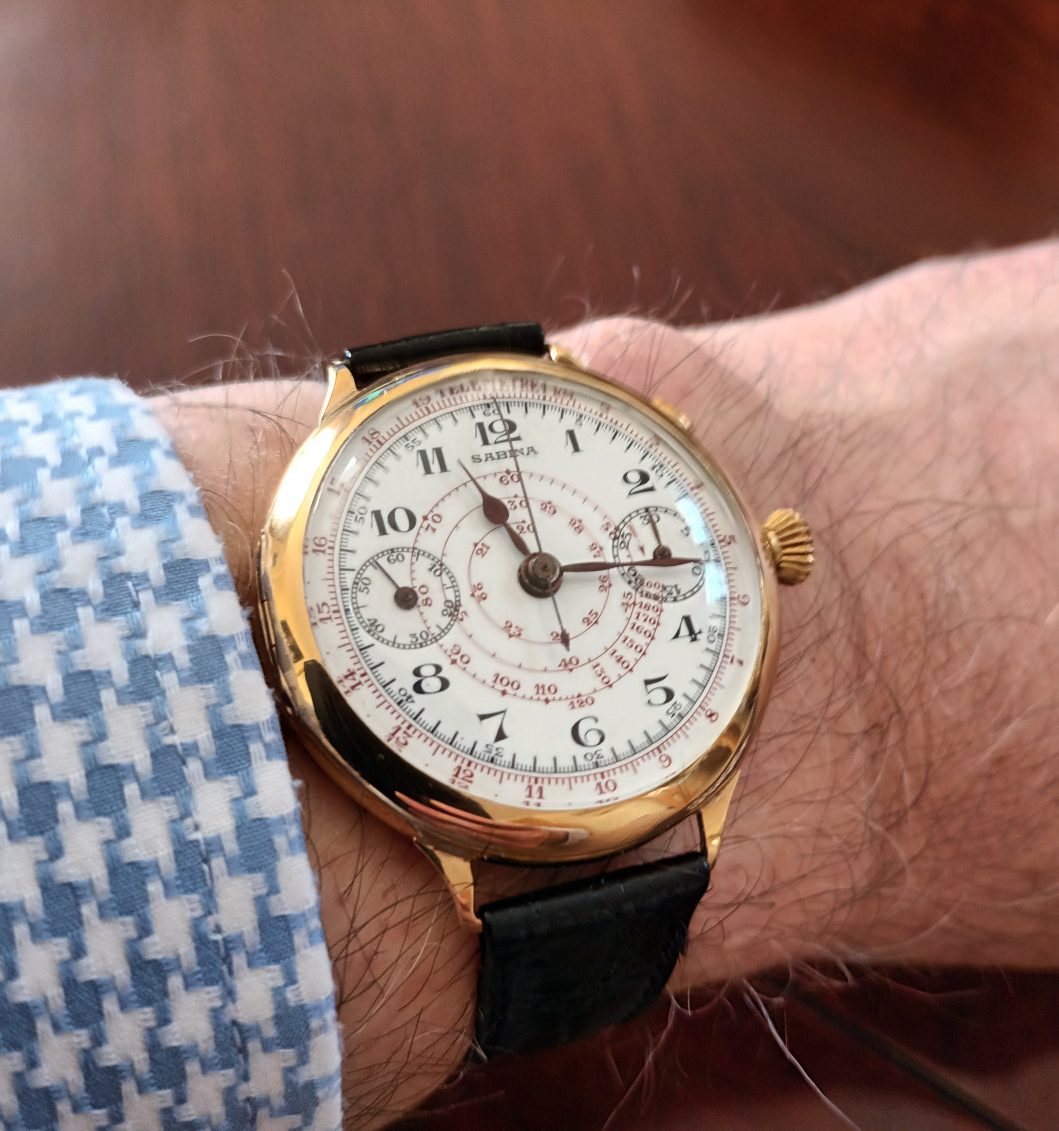
Overall, I am very content with my purchase. Even more so after since discovering an almost identical watch for sale in the UK (albeit from Universal Geneve and a tiny bit more substantial) for over £6k! I have also discovered some other watches with all-but identical dials. The first is a Breitling mono pusher (which they invented in 1915) and the second, a double pusher from Eberhard. I will undertake further investigations, but it seems clear that the same dial was made for various brands.
Words: The Writer
Images: The Writer – unless noted otherwise.

